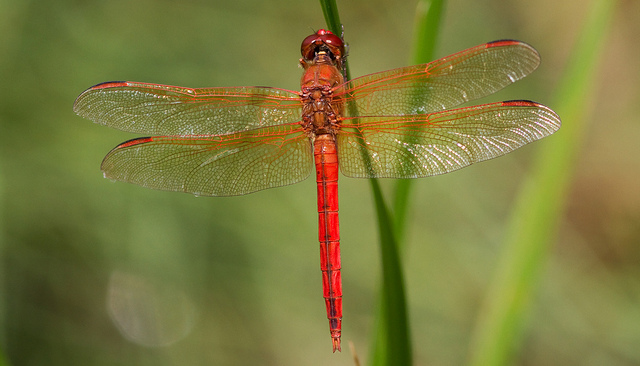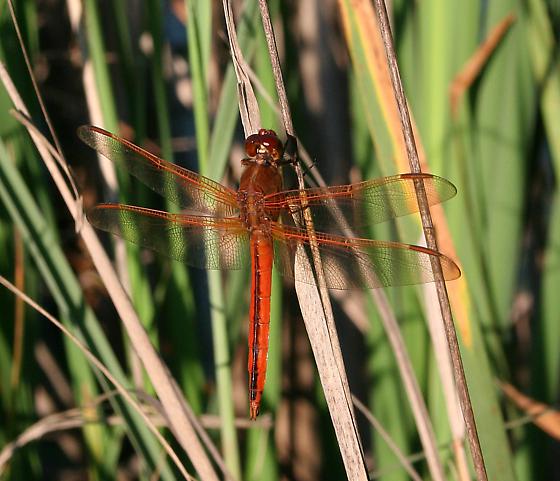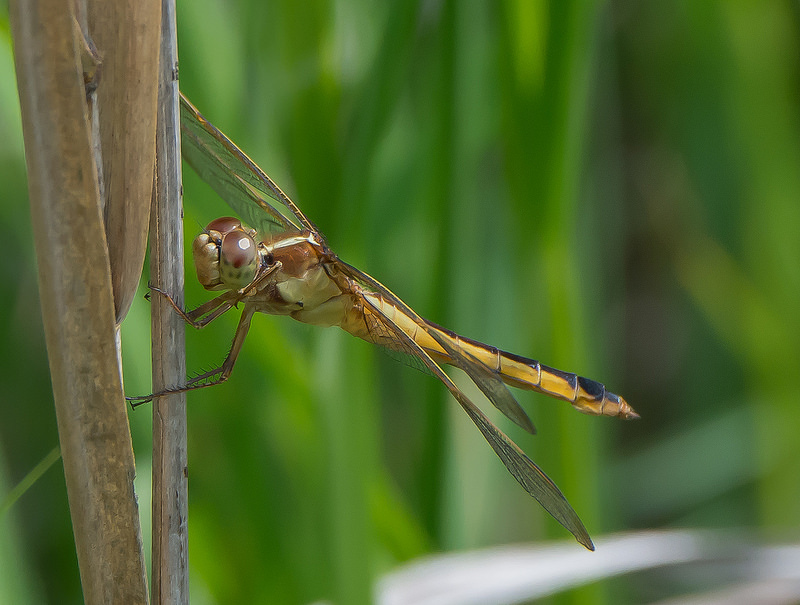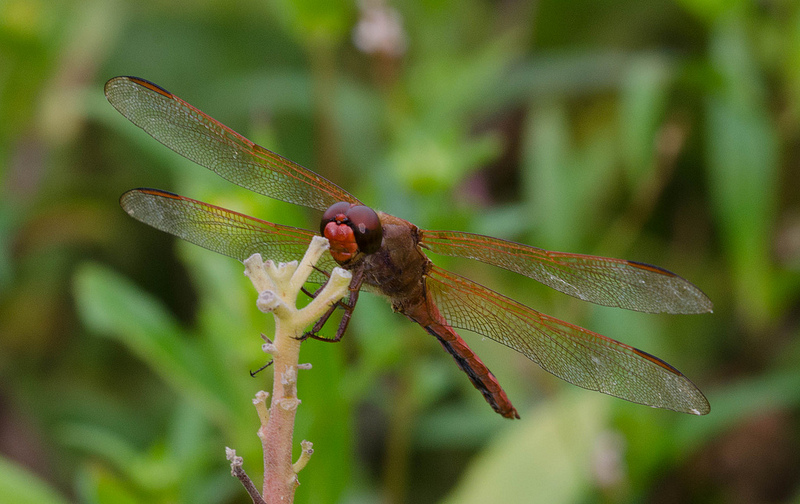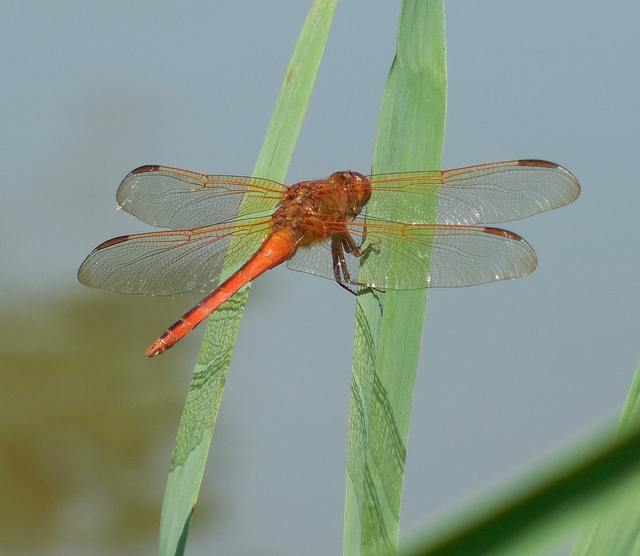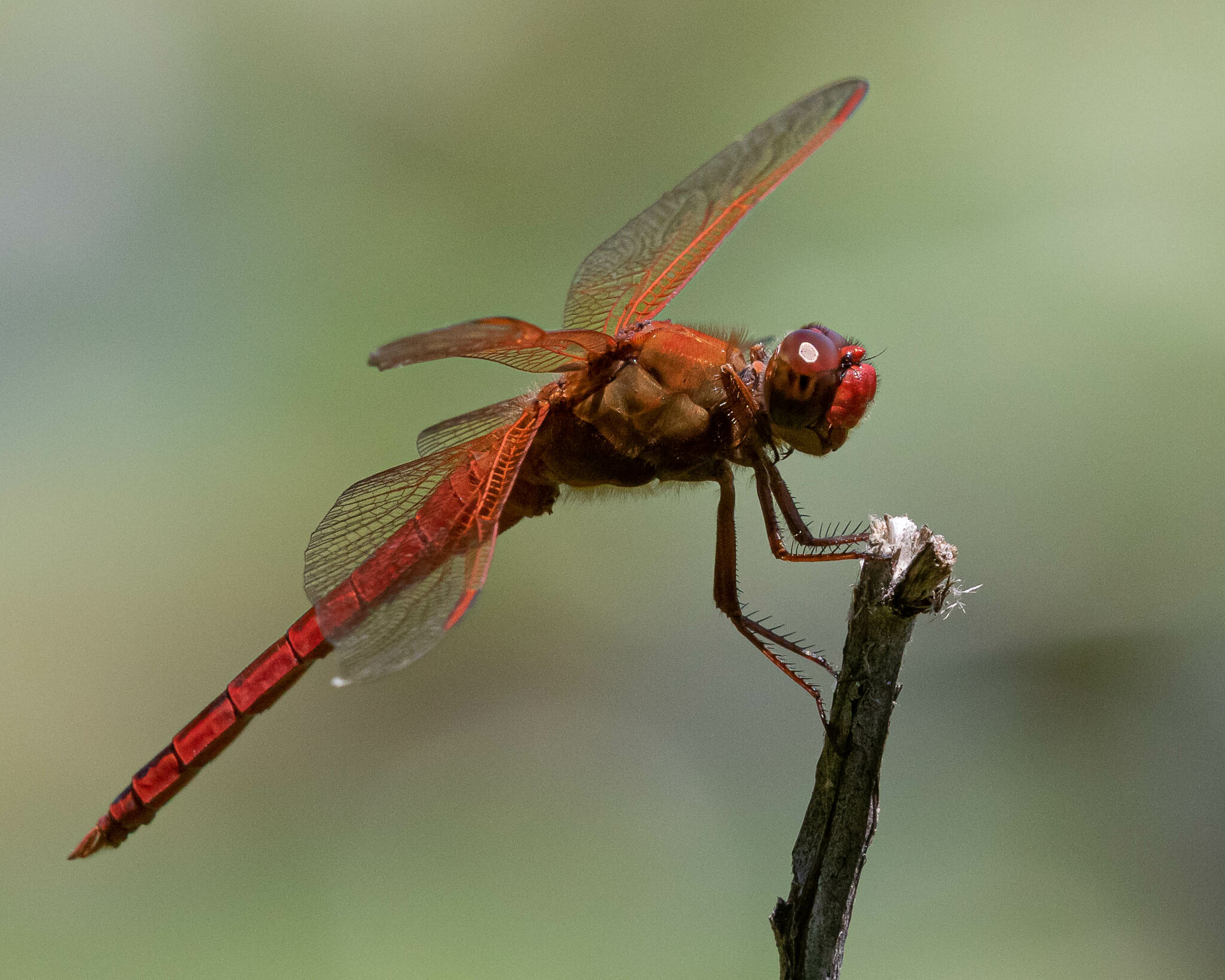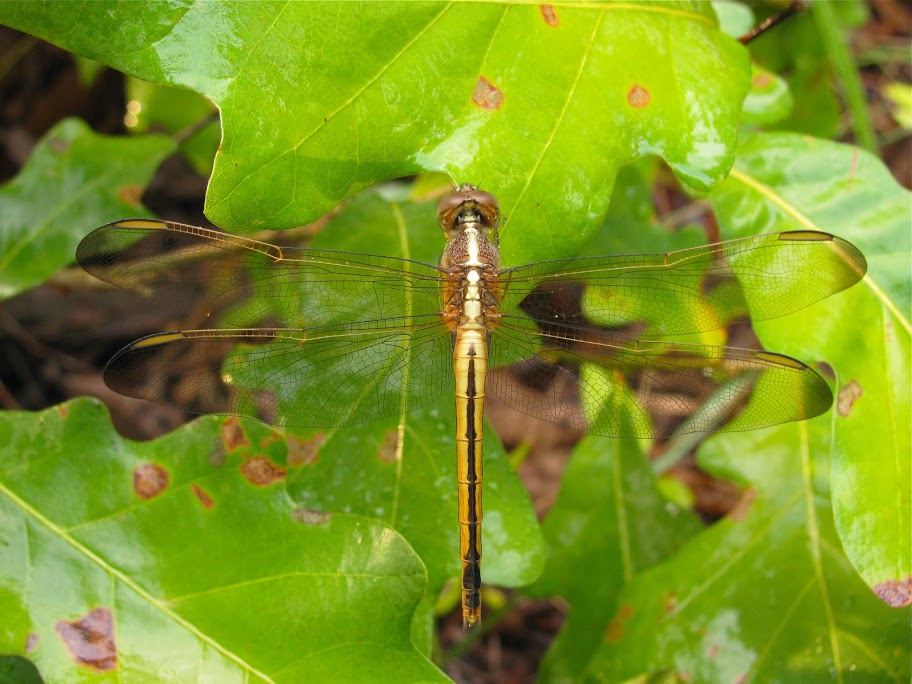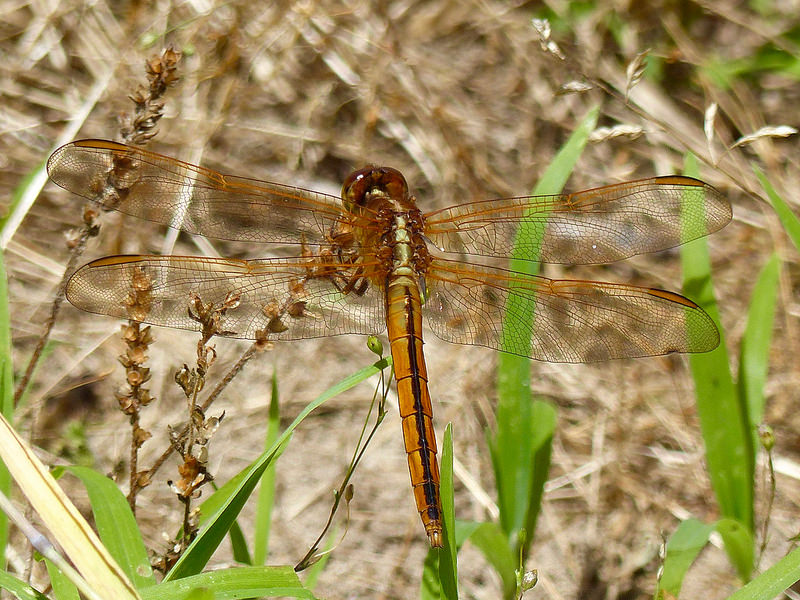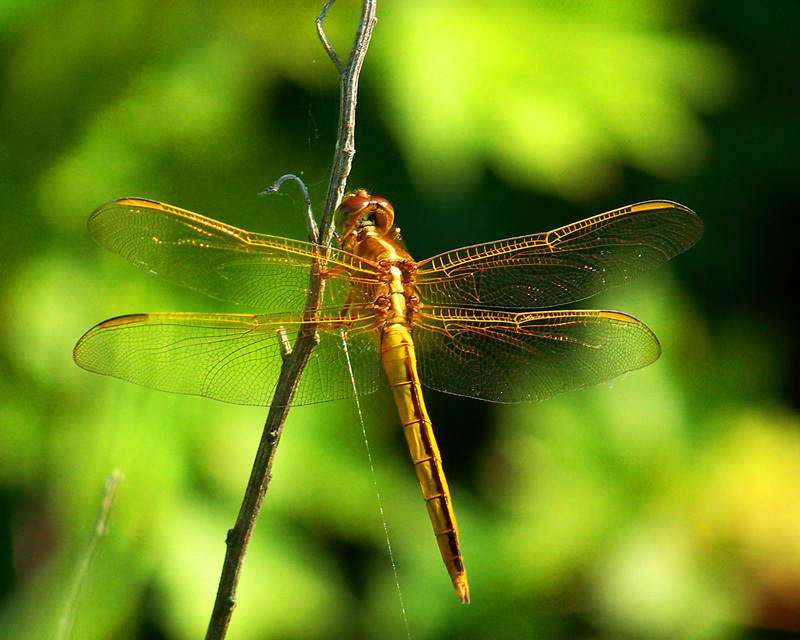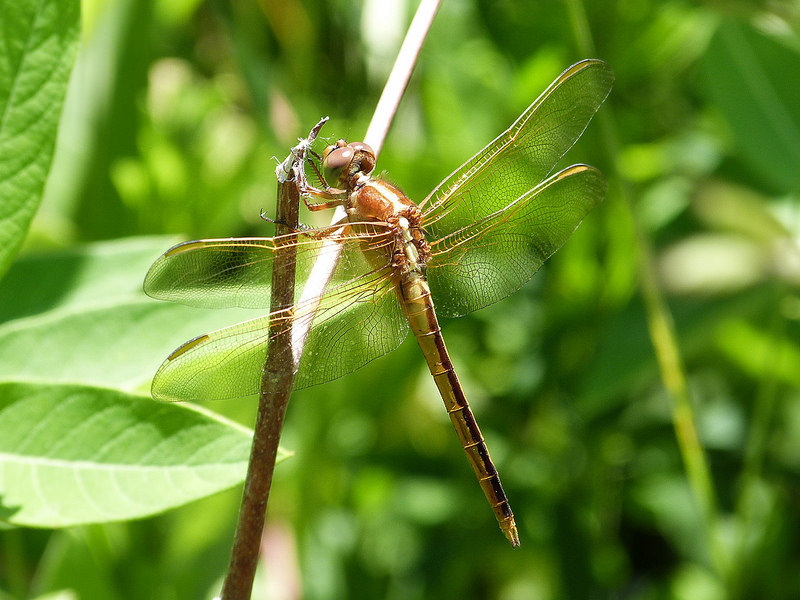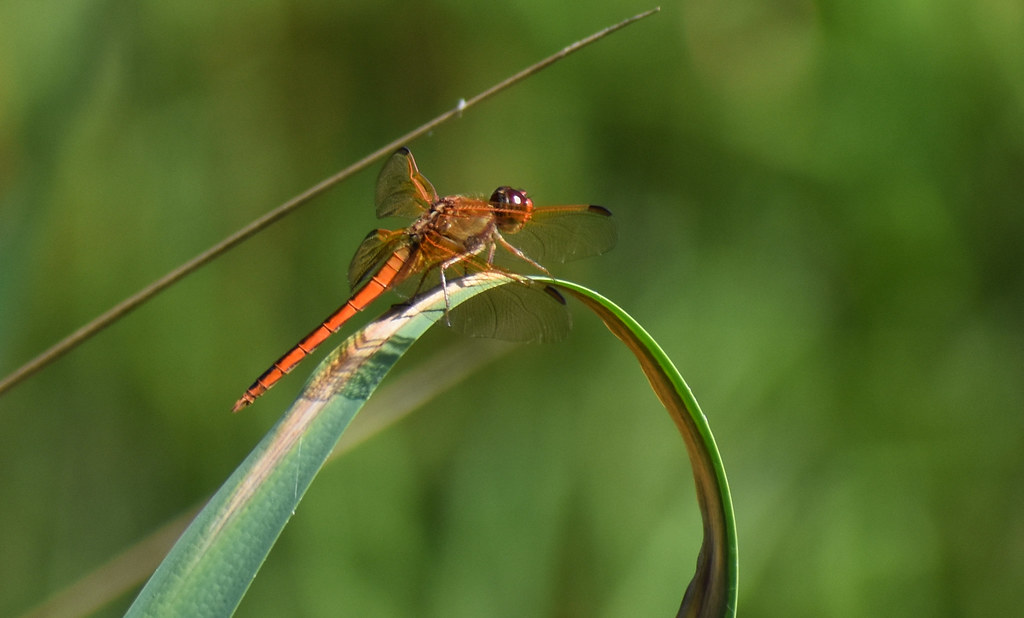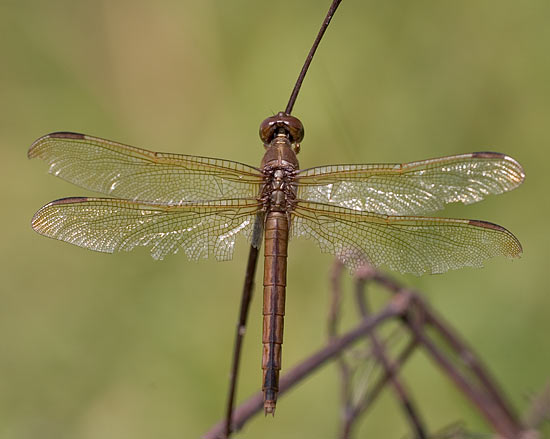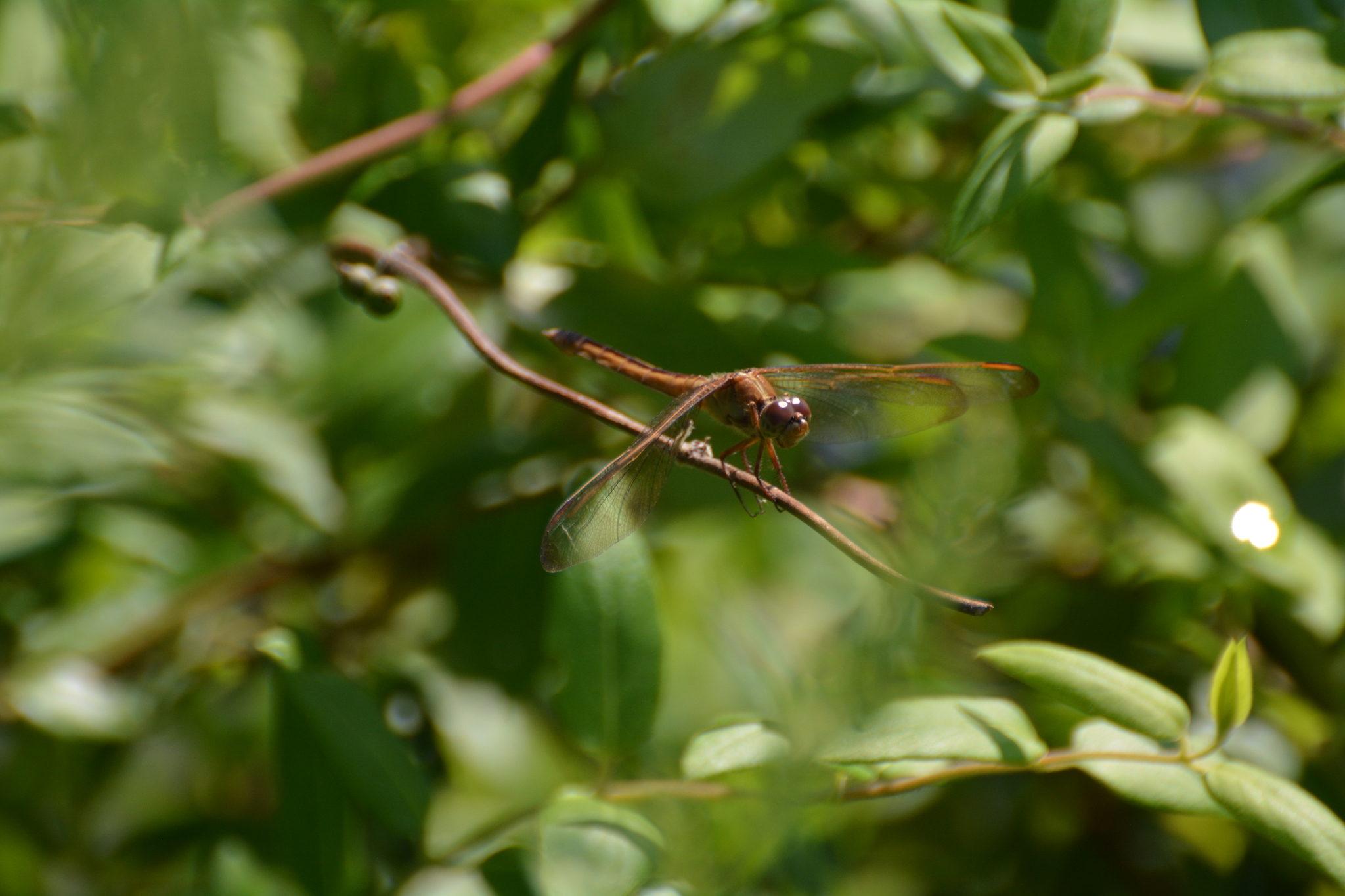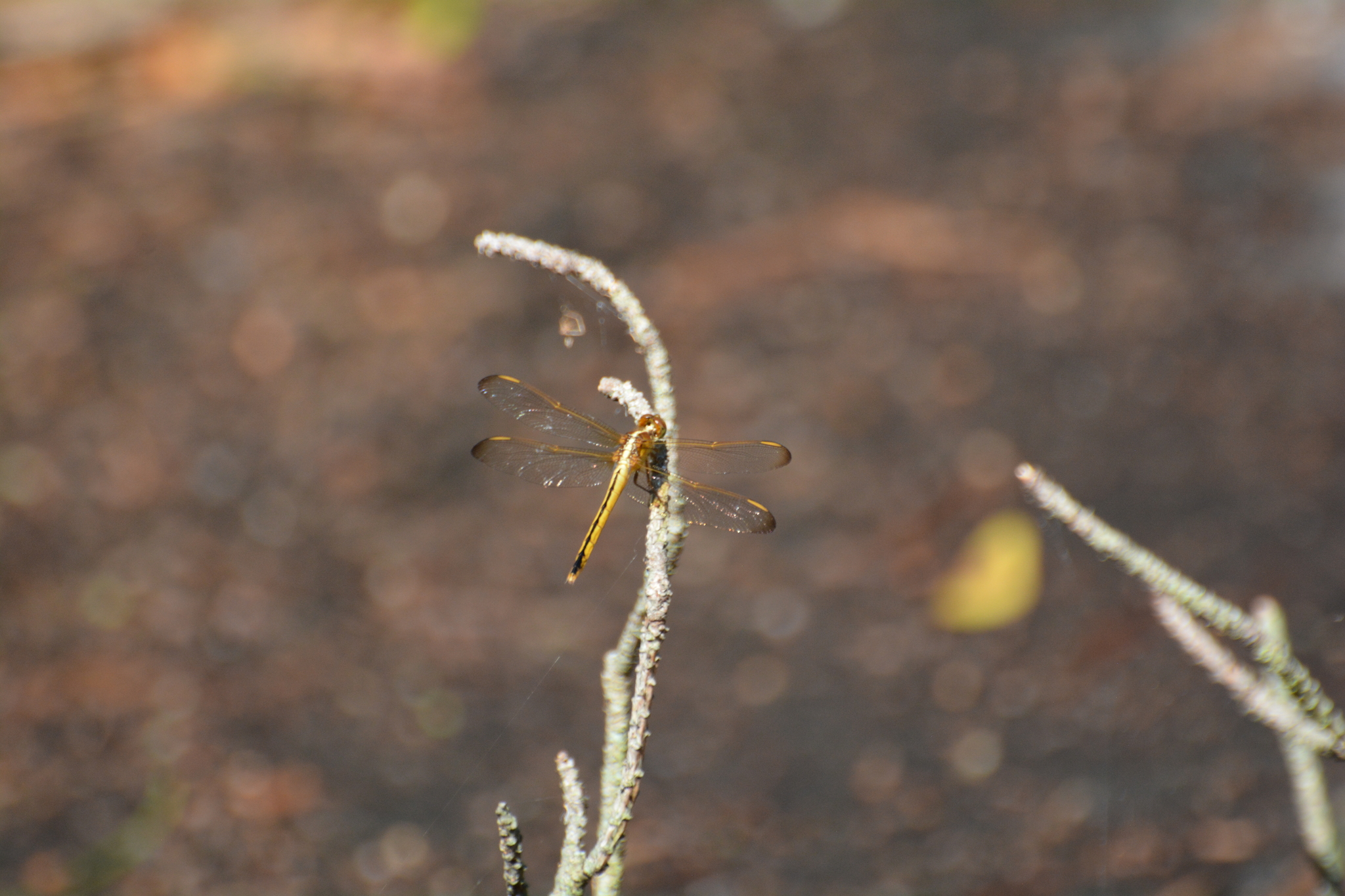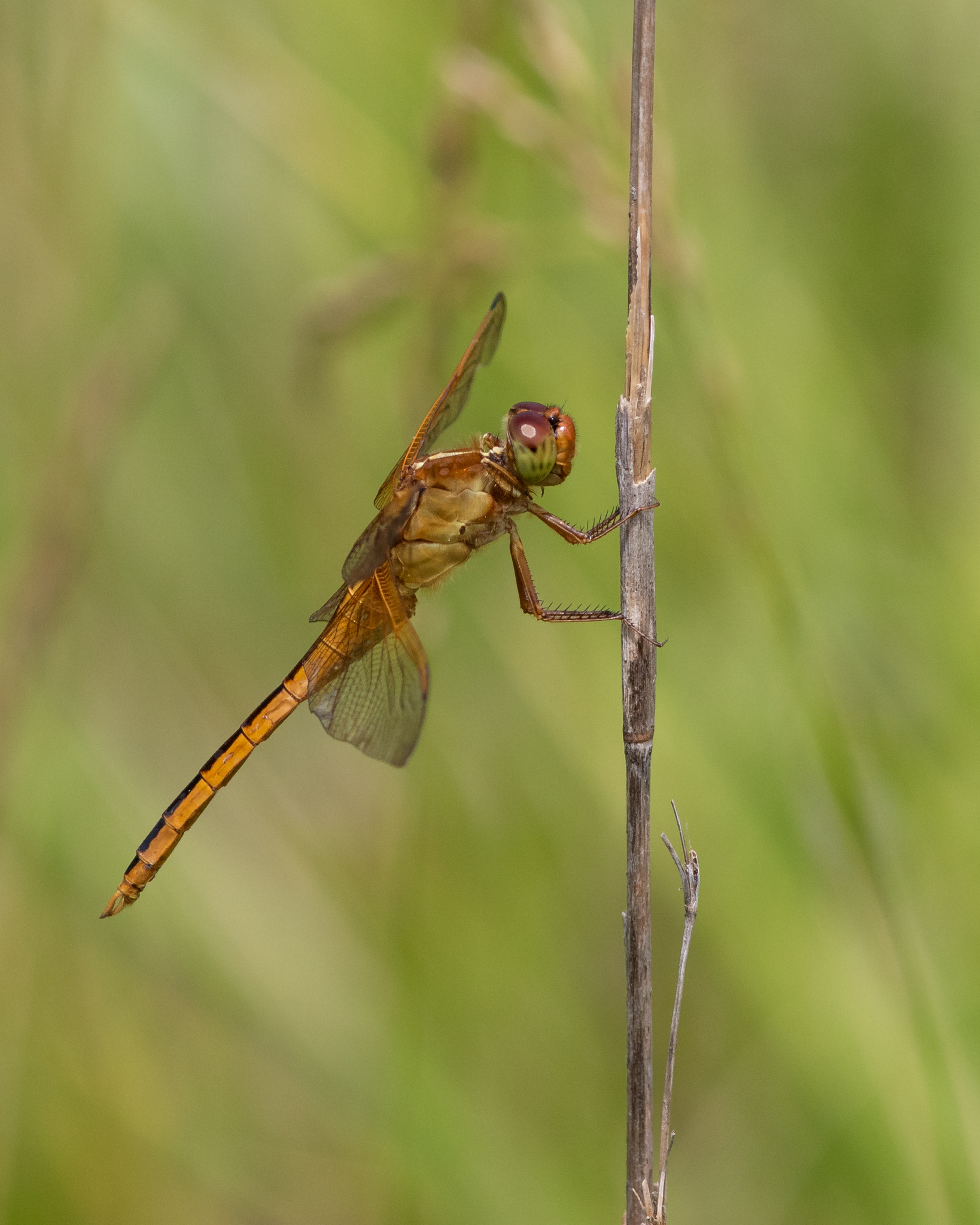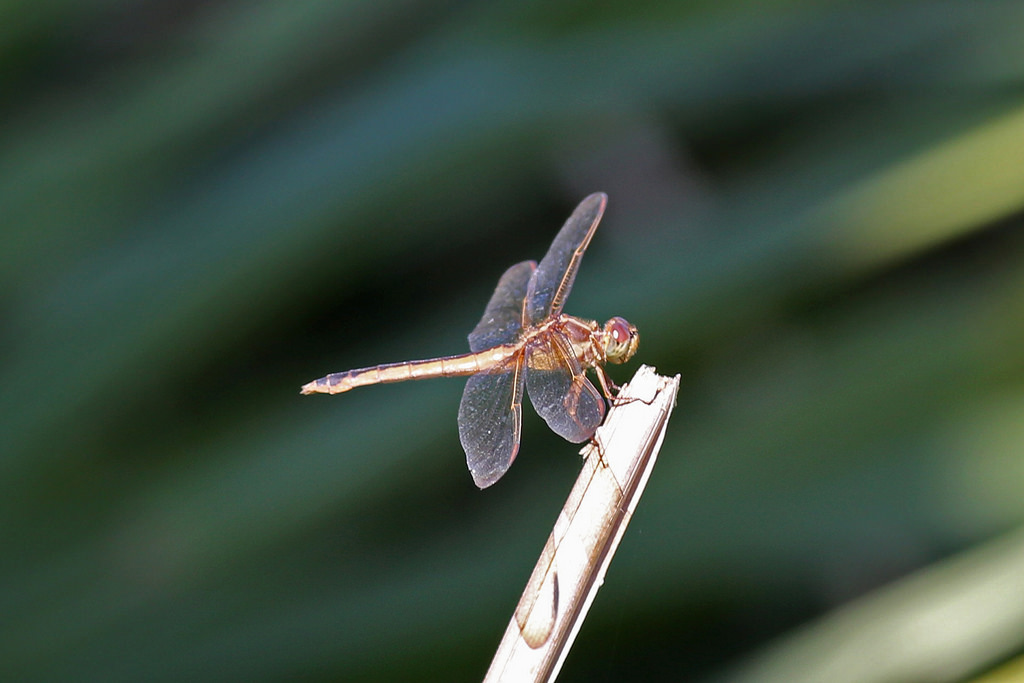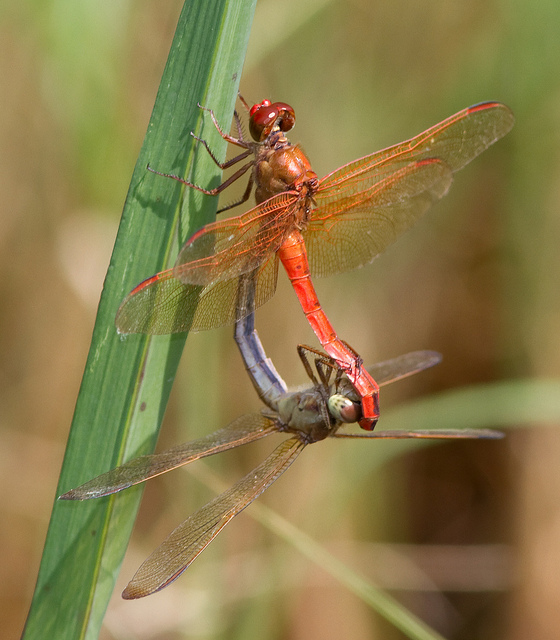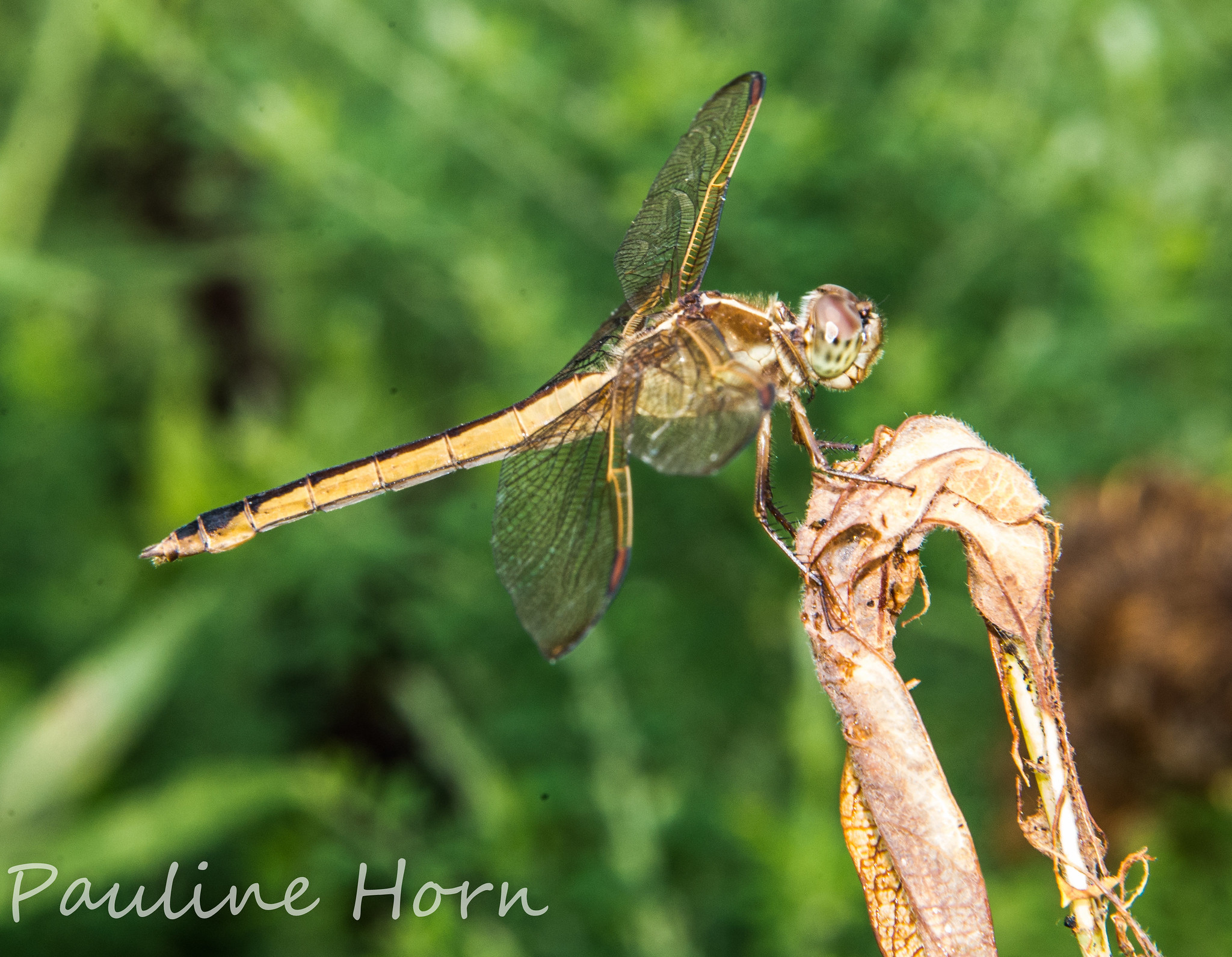Map Snapshot





















954 Records
Status
Needham's Skimmer (Libellula needhami) is a close relative of Golden-winged Skimmer (Libellula auripennis, and can be difficult to distinguish with suboptimal views. Needham's is generally a coastal plain species, and is usually most common in the vicinity of the coast. This dragonfly utilizes ponds, lakes, and marshes, including coastal ones, but usually does not occur at the same sites as Golden-winged Skimmer, perhaps a case of competitive exclusion. In Maryland, this skimmer is common along coastal plain counties, but may occur uncommonly inland into the piedmont in some places (Richard Orr's The Dragonflies and Damselflies of Maryland and the District of Columbia).
Seasonality Snapshot
Source: Wikipedia
| Libellula needhami | |
|---|---|

| |
| Female | |

| |
| Male | |
| Scientific classification | |
| Domain: | Eukaryota |
| Kingdom: | Animalia |
| Phylum: | Arthropoda |
| Class: | Insecta |
| Order: | Odonata |
| Infraorder: | Anisoptera |
| Family: | Libellulidae |
| Genus: | Libellula |
| Species: | L. needhami
|
| Binomial name | |
| Libellula needhami Westfall, 1943
| |
Libellula needhami, or Needham's skimmer, is a species of skimmer in the family of dragonflies known as Libellulidae.[2][3][4][5] It is found in the Bahamas, Cuba, Mexico, and the United States.[2]
The IUCN conservation status of Libellula needhami is "LC", least concern, with no immediate threat to the species' existence. The population is stable.[1][6]
The species is named after the American entomologist James George Needham.[7][8]
Description
[edit]Males have a red face, while females have a brown or yellow face.[8]
This species can be separated from the very similar Libellula auripennis by the following:
- their posterior (rear) wing veins do not become orange[8]
- their costa changes color on opposite sides of the node: outer half is lighter, inner half is darker[9]
- their hind tibia are brown, not black[9]
References
[edit]- ^ a b Paulson, D.R. (2017). "Libellula needhami". IUCN Red List of Threatened Species. 2017: e.T51276359A80697363. doi:10.2305/IUCN.UK.2017-3.RLTS.T51276359A80697363.en. Retrieved 24 August 2023.
- ^ a b "Libellula needhami Report". Integrated Taxonomic Information System. Retrieved 2018-04-21.
- ^ "Libellula needhami species details". Catalogue of Life. Retrieved 2018-04-21.
- ^ "Libellula needhami". GBIF. Retrieved 2018-04-21.
- ^ "Libellula needhami Species Information". BugGuide.net. Retrieved 2018-04-21.
- ^ "Odonata Central". Retrieved 2018-04-21.
- ^ Westfall, Jr., Minter J. (March 1943). "The Synonymy of Libellula auripennis Burmeister and Libellula jesseana Williamson, and a Description of a New Species, Libellula needhami (Odonata)". Transactions of the American Entomological Society. 69 (1). American Entomological Society: 17–31. JSTOR 25077502.
- ^ a b c "Needham's Skimmer Libellula needhami Westfall, 1943". New York Natural Heritage Program. State University of New York College of Environmental Science and Forestry.
- ^ a b "Misc images, intended to be viewed from other sites". Fotki.
Further reading
[edit]- Kalkman, V. J. (2013). Studies on phylogeny and biogeography of damselflies (Odonata) with emphasis on the Argiolestidae (PhD). Leiden University. hdl:1887/22953.
External links
[edit] Media related to Libellula needhami at Wikimedia Commons
Media related to Libellula needhami at Wikimedia Commons
